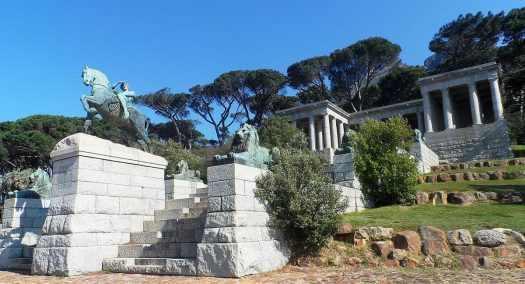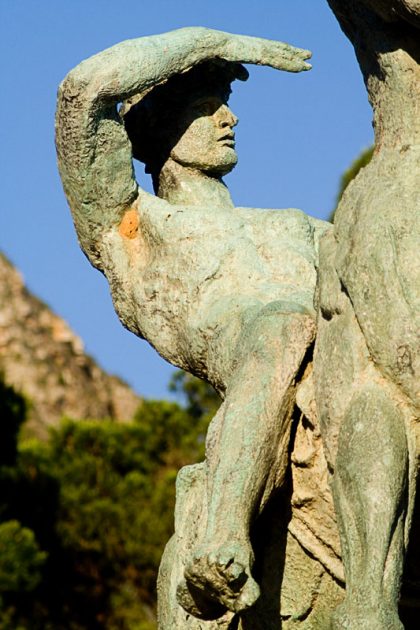- CountrySouth Africa
- Town:Capetown
-
Year of creation:1902
- Rider(s):Physical Energy
Although best known as a painter, Watts was also a sculptor. After completing a commission for the Duke of Westminster for an equestrian monument to commemorate his ancestor, Hugh Lupus, Watts set to work on a new plaster model of another horse and rider, without specific reference to any individual, in 1883. Seeking to reinvigorate the rhetoric of the equestrian monument for the modern age, he was still working on it at the time of his death in 1904. The plaster model was part of the artist’s bequest to Watts Gallery, and, also in 1904, the first bronze cast of the work (made in 1902 at the Parlanti Foundry) became the artist’s last submission to the Royal Academy’s summer exhibition. Physical Energy then travelled to Cape Town to form part of a memorial to the founder of Rhodesia (now Zimbabwe), Cecil Rhodes. In 1907, a posthumous cast was made and sited in Kensington Gardens, London, fulfilling the artist’s intention to gift the work to the British Government, insisting that it should be “for the nation” and displayed “somewhere in London”. A third cast, created in 1959, is situated in the grounds of the National Archives of Zimbabwe in Harare.
Being the culmination of Watts’s ambition in the field of public sculpture, Physical Energy is an allegory of human vitality and humanity’s ceaseless struggle for betterment; he said it was “a symbol of that restless physical impulse to seek the still unachieved in the domain of material things”. It also embodied the artist’s belief that access to great art would bring immense benefits to the country at large. - Sculptor(s):Watts, George Frederic
(1817 – 1904) was a British painter and sculptor associated with the Symbolist movement.








